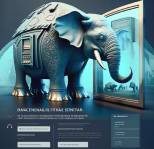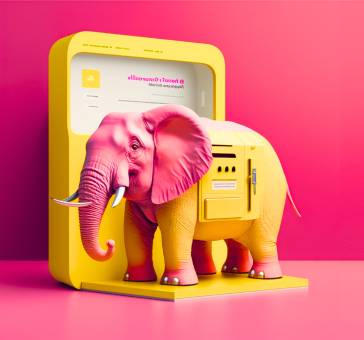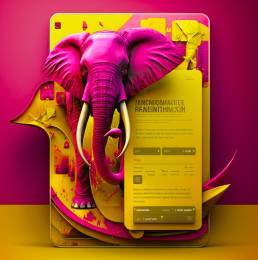
Alberts Pumpurs
Exactly How Do Social Networking Features Benefit Your Product or Service?
Social networking features are a valuable asset for any digital product or service. They can help to:

- Exponentially increase the number of new users
- Increase productivity of your service and new content generation
- Create collective intelligence that is shareable between like-minded people
- Provide a reason for users to return to the service and increase their perception of value
- Generate new ideas and innovations for future product development
Those are valuable benefits for every business and service, but it is not as easy to implement as it sounds. It is not enough to add social networking features such as content feed, comments, and the ability to follow someone, like, share and reshare. For social networking features to elevate your offering, users must find them valuable.
Value of Social Networking Features
In research, value accounts for 50% of the total long-term user experience for social features to work.
Value is subjective, as each service user will provide their definition, preferences and priorities. However, in interviews and literature reviews, a handful of benefits tend to arise more than others.
Those essential core benefits include:


Self-satisfaction – A reliable solution every time
Meeting customer needs – Critical functions and features are customisable to a meaningful degree
Pleasing to use – The service should be effortless in its use without meaningless, redundant, or duplicated steps
Socialisation – Generate social value, belonging to a particular group, and give reason to boast about the product
Creating attachment – A service that becomes a habit to use
Social Networking Features Are Here to Stay

The web has profoundly affected how people interact with each other – and in large part, social networks are the ones to blame for it. Social networking was the essence of WEB 2.0, allowing internet users to connect, share user-generated content, create communities, share opinions and find like-minded people worldwide.
The ability to connect was so powerful that every new service or app developer pushed social networking into their solution. It is a powerful concept: the idea is that you can easily find, connect, and relate to other like-minded people, especially if you have similar interests and regardless of the distance between you. It is hard to imagine today, almost 20 years later, what a revolutionary step in consumer interaction it was: there is little wonder that every new app and web service came out with a social networking feature.
you can easily find, connect, and relate to other like-minded people, especially if you have similar interests and regardless of the distance between you
Do the Benefits Outweigh the Issues?

Of course, there was an almost inevitable shift in perception: due to seemingly unending social and political scandals – social networks gained negative sentiment. Now, decisions around incorporating social networking must consider newer shiny technological advancements and promises of WEB 3.0 are pushing discussion of whether your next project should have social integration. Even the big players haven’t figured it all out, and whether social features bring more problems than benefits is hotly debated.
To that end, a longitudinal research study took place to determine how people benefit from social networking features and to identify what user experience dimensions account for a reason to keep using these features.
Multiple literature reviews and field studies claim that usability, with its subdomain UX, is the most critical aspect of product or service success. However, the research concluded that usability is essential only during the first week of product use. That is when the user learns interaction patterns with the product, the product’s navigation and information architecture, and the execution of general use cases.
After the first week in the long-term study, UX research value accounted for more than 50% of the overall UX of why people would keep using the product
UX Subfactors That Create a Sense of Value


Self-satisfaction
The degree to which a product/service gives a user satisfaction with themself or their achievements. Self-satisfaction manifests in how the user’s personality and identity are reflected through the product use: whether the product compliments their personality and worldview. This can be summarised by whether the user has enough confidence and reliability that each time they open the service with a particular goal in mind, they can execute their requirements without any obstacle.
Customer need
This is the extent to which functions or appearances of a product/service satisfy the user’s needs. Expectations are a compelling feeling that gets users pumped up and excited – they are not “hope” that represents the possibility of positive and negative outcomes. On the contrary, expectations are strongly positive feelings based on the product, and if the expectations do not match with the result, it usually causes devastating emotions and letdowns.
When advertising a product, customers’ needs need to be matched by the product being practically useful – this requires a variety of tools and functions that meet core product promises.


Pleasure
Your users’ feeling of being pleased or gratified due to interacting with a product/service. If working with the product or service is fun and relaxing – what’s not to like about it? On the other hand, in a strictly practical sense, if a task comes to mind as something that you would rather postpone for later – it is likely not fun, relaxing, or pleasurable.
Attachment
The user can attach subjective value to a product/service. The keyword here is ‘subjective’, as each of us has different personal meanings that we link to things we own and use. For example, for some, a smartphone brand can symbolise status, belonging to a group, a statement, or simply a messaging and internet-connected device for work. Of course, you won’t get all the meaning from your users on your product/service, but it’s essential to distinguish the most important ones that align with your brand and integrate them.


Conclusion

When creating a product, web service, or new app, don’t just add a user feed, an option of sharing, social metrics, or other features hoping that that is what users want and with which they will engage. Of course, all of that and other even more innovative features are valuable, but only then if the value of the service is already in place.
When users understand that your service is something they will not willingly let go of, social networking features will help you gain exponential user growth, increase productivity, grow a community, and increase customer lifetime value.

At Creative Data Studio, we help companies and product owners understand what their customers want through data insights. Our goal is to help businesses and products improve their customer relationships and engagements. We work closely with a team of creatives, web designers, developers as well as branding experts, to deliver positive results in a variety of industries.
Our unique approach combines scientific research with creativity of design and branding to help our clients achieve their product goals.
